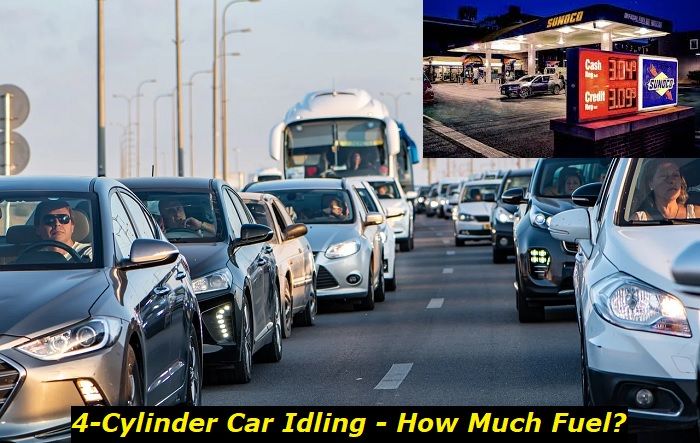The Smart City Brake Support (SCBS) is a nice technology on paper. It helps improve the safety offered by Mazda vehicles equipped with it by mitigating the risk or effects of a collision at low speeds.
SCBS malfunction message highlights
- Common reasons:PCM issues, vacuum pump problems, oil pump early issues
- How to fix:no DIY fixes for this other than disconnecting the battery and resetting the error codes
- Possible consequences:a lot of bad things may happen if ignored
- Priority level:High
- Can you drive?Carefully
- DIY repair:Impossible
- Repair price range:$250-$900

The Function of the Smart City Brake Support
According to Mazda, its signature SCBS system employs a laser sensor positioned on the windshield of the car to track and detect the vehicle ahead. As long as the automobile is moving at less than 18 miles per hour, the SCBS system can identify a probable accident.
When the system anticipates a collision, it assists in setting up your brakes so that your car can stop swiftly and safely. In an effort to prevent or at least lessen the severity of a prospective accident, SCBS automatically applies the brakes and limits engine power if the driver does not swerve or apply the brakes to avoid a potential collision.
If the "Smart City Brake Support Malfunction" occurs while you are operating your car, it will go into limp mode until the problem is resolved.
Bad PCM
A number of users over Mazda forums and Reddit threads shared their experience with the problem. The consensus was that it had something to do with the powertrain control module (PCM).
There was one notable user who said that the problem happened to him as early as the 6,700-mile mark just after he bought his car. The owner recounted that he attempted to restart the car several times in 15-minute intervals in an attempt to reset the system, and it eventually returned to normal after the fifth try but with the Check Engine light this time.
As a result, he had his car towed to the dealership. From there, it was determined that the PCM had to be replaced. Upon taking back his car, the fix seemed to work.
If you own a Mazda 6, it's important to be aware of the signs that your PCM may be failing. A bad PCM can trigger different faults in your vehicle, including the "Smart City Brake Support Malfunction" fault that appears on the dashboard. It may force your car to go into limp mode, too.
Some of the other symptoms that can indicate a failing PCM include engine misfires, stalling, and poor fuel economy. If you notice any of these issues, it's important to have your vehicle checked out by a qualified mechanic or your Mazda dealership as soon as possible.
Ignoring a failing PCM can lead to more serious problems down the road. Likewise, your vehicle suddenly going into limp mode while you are driving on the road may pose an accident risk on your part.
PCMs are made of microchips that can be electrically reprogrammed without being taken out of the car. Normally, PCM problems can be fixed via the process called reflashing. Reflashing the PCM is essentially updating its software to remove some bugs in the system that may be causing errors in your dashboard.
The process is similar to updating the operating system (OS) of your phone to eliminate the gremlins causing some of its apps to malfunction.
Reflashing is only applicable if the issue has been zeroed in on a software-related malfunction in the PCM though. In the case that its hardware is already compromised, which is deemed to be the root of the problem, it will have to be replaced entirely.
Bad Wiring
In addition to PCM problems, one of the most common issues that can trigger the "Smart City Brake Support Malfunction" fault on the Mazda 6 dashboard is bad wiring. Over time, wires can become corroded or damaged, which can cause them to break or lose connectivity. This can prevent the Smart City Brake Support system from functioning properly, and may even cause it to fail entirely.
If you suspect that bad wiring may be causing problems with your Smart City Brake Support system, there are a few steps you can take to check for corrosion or damage. First, visually inspect all of the wires in the system for signs of wear or damage. If any wires appear to be damaged, it's important to replace them as soon as possible.
If they appear to be of good quality, use a voltmeter to test the connectivity of the wires while your engine is off. To do this, connect one lead of the voltmeter to a known good ground point on the vehicle, and then touch the other lead to each wire in turn.
The voltmeter should read close to 12 volts when connected to a good wire. if the reading is significantly lower, this may indicate that the wire is damaged or has poor connectivity.
If you find any corroded or damaged wires, it's important to clean them as soon as possible. Corrosion can cause serious problems with the electrical system in your Mazda, and may even lead to a fire. To clean corroded wires, use a wire brush or sandpaper to remove any build-up of corrosion. Once the wires are clean, apply a coat of dielectric grease to help prevent further corrosion.
Bad wiring is a serious problem that can have dangerous consequences. If you suspect that there may be bad wiring in your Mazda, it's important to have it inspected and repaired as soon as possible. Driving with bad wiring is not only unsafe but could also void your vehicle's warranty due to your continuous neglect to have them fixed.
Other Causes
There are other factors that may directly cause the activation of the "Smart City Brake Support Malfunction" in the Mazda 6 based on the official statements of the Japanese brand through its Customer Help and recall notice.
The other possible culprits according to Mazda are the following:
1. Forward Sensing Camera (FSC) Malfunction
In the Customer Help of Mazda, the automaker admitted that the warning light of the SCBS can activate during heavy rain or fog on the windshield. This exactly makes perfect sense as the Forward Sensing Camera (FSC) is located on top of the windshield. However, it is ridiculous that it can mistake rain or fog as collision risks.
According to the Web Owner's Manual of Mazda, the FSC recognizes traffic lanes and assesses the surroundings in front of the car, especially at night. Its sensor aids the SCBS in detecting objects in front of the vehicle.
The automaker advises using the wipers if the windshield is fogged in or covered with rain. Meanwhile, the Defrost function should be activated to help remove glass fogging from the inside. In short, a spotless windshield is necessary to ensure the proper function of the FSC so that it will not interfere with the operation of the SCBS.
If the warning light is still on after defrosting or cleaning the windshield Mazda recommends taking your car to its dealership for an inspection and necessary repairs.
2. Battery Voltage Failure and Electric Power Steering Module (EPS) Malfunction
Based on the Technical Service Bulletin of Mazda to customers in 2020, battery voltage failure as well as a problem with the EPS control module may be blamed for the issue. It's possible that the initial learning for the steering center position of the EPS module may be bugged during its initial learning for its steering center positioning while cranking.
This could lead to the FSC sending the wrong signal to the EPS, and one of the errors it may produce is the SCBS warning.
The repairs that Mazda rolled out for these issues affecting the function of the SCBS are reprogramming the FSC via PCM reflashing and replacement of the cables preventing the proper delivery of electricity to the FSC hardware.
Conclusion
The "Smart City Brake Support Malfunction" warning light in the Mazda 6 can be caused by a lot of factors. Normally, these can be due to a bad PCM or wiring problems. Other things that may trigger it according to Mazda include Forward Sensing Camera (FSC) malfunction, battery voltage failure, and Electric Power Steering Module (EPS) malfunction.
No matter where the problem may be coming from, it's important to have it inspected and fixed by your mechanic or nearest Mazda dealership as soon as possible. Leaving the problem as it is can force your car to go into limp mode which can both be inconvenient and dangerous on your part.
Similarly, if it's an electrical issue causing the problem, postponing its servicing might lead to more expensive repairs in the near future or even a fire that may leave your Mazda 6 in a write-off in the worst-case scenario setting.
About the authors
The CarAraC research team is composed of seasoned auto mechanics and automotive industry professionals, including individuals with advanced degrees and certifications in their field. Our team members boast prestigious credentials, reflecting their extensive knowledge and skills. These qualifications include: IMI: Institute of the Motor Industry, ASE-Certified Master Automobile Technicians; Coventry University, Graduate of MA in Automotive Journalism; Politecnico di Torino, Italy, MS Automotive Engineering; Ss. Cyril and Methodius University in Skopje, Mechanical University in Skopje; TOC Automotive College; DHA Suffa University, Department of Mechanical Engineering






Add comment